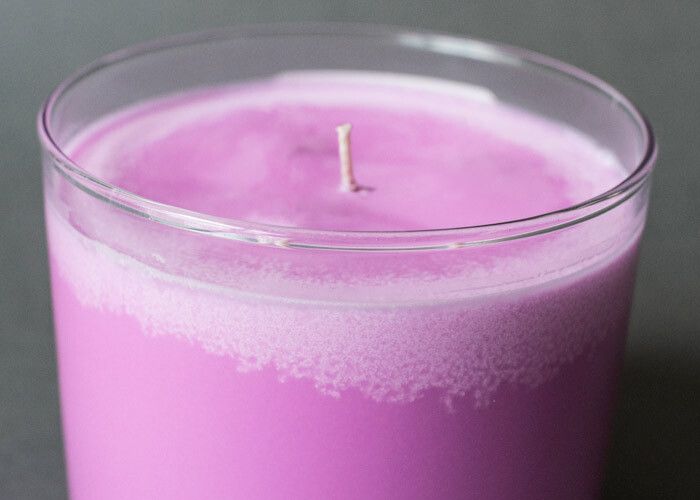Why We Don’T Use Soy Wax?
Soy wax is a relatively new candle wax that was developed in the early 1990s as an alternative to paraffin wax. According to Soya, soy wax was invented in 1991 by Michael Richards, who was looking for a cheaper and more sustainable alternative to beeswax. Soy wax is made from hydrogenated soybean oil and became popular among candle makers and consumers looking for a natural, clean-burning wax.
The use of vegetable oils for candle making dates back centuries to places like Japan, but soy wax specifically was pioneered in the 1990s. Zuzu Candle Co. notes that soy candles gained significant market share in the late 1990s and early 2000s as consumer interest in natural products grew. While paraffin wax remains the most common candle wax today, soy wax continues to increase in popularity due to its renewable and sustainable sourcing.
Soy Wax Drawbacks
Soy wax does have some disadvantages compared to paraffin wax when it comes to candle making.
One drawback is that soy wax is softer and can be more prone to cosmetic issues like wet spots and frosting. Paraffin wax has a higher melting point, resulting in a harder finish that resists wet spots [1]. Soy wax can also experience “frosting” as it absorbs oil from essential oils and fragrance oils. This can impact the look of the candle over time.
Soy wax does not adhere to wicks as well as paraffin wax. This makes it more challenging to achieve an even burn. There is a higher risk of the wick tunneling into the wax with soy [2].
The fragrance throw and intensity is typically stronger in paraffin wax. Soy wax can struggle to retain scents as strongly. This results in a lighter fragrance when burning soy candles compared to paraffin [1].
Paraffin Wax Benefits
Paraffin wax has a high melting point and is harder than soy wax, making it more suitable for making candles (Healthline, 2022). The higher melting point, which can reach 130-150°F, allows paraffin wax candles to burn longer without losing their shape or collapsing in high temperatures (Medical News Today, 2022). Paraffin’s hardness also allows for better scent throw and makes it easier to create detailed decorative designs on candles.
In addition, paraffin wax is derived from petroleum, so it is generally cheaper than soy wax. The lower cost makes it more profitable for candle makers to use paraffin wax while keeping their products affordable for consumers.
Sustainability Concerns
Soybean farming has raised major sustainability concerns in recent years. The rapid expansion of soybean cultivation, especially in South America, has been linked to widespread deforestation. According to Earth.org, soybean production was responsible for the loss of 17 million hectares of forest in Brazil between 2001-2006. Much of this deforestation occurred in the Amazon rainforest, which plays a vital role in regulating the global climate.
Large-scale soybean farming also requires significant use of chemical fertilizers and pesticides, leading to water and soil pollution. An WWF report states that only 2-3% of soybean farming globally complies with sustainability standards. Most soy is grown on large industrial farms rather than smallholder plots. These practices degrade biodiversity and deplete soil nutrients over time.
Given the major ecological impacts, many environmental advocates argue that large-scale soybean production is unsustainable. Consumer demand for meat and dairy provides the main driver for soy farming expansion. Pursuing more plant-based diets and sustainable farming techniques can help address the industry’s sustainability challenges.

Testing and Quality Control
Our quality control experts found that soy wax can be more inconsistent and prone to issues compared to paraffin wax. Soy wax tends to have more problems with frosting, wet spots, texture, and quality control during manufacturing (source). Paraffin wax provides a more consistent candle making experience in terms of appearance, burning, and manufacturing quality. With paraffin, we can better control testing procedures and produce candles that reliably meet our quality standards.
Additionally, soy wax requires more specialized handling and storage conditions to prevent it from going bad or developing inconsistencies. Our facilities are optimized for paraffin wax, where temperature and humidity can be closely monitored for ideal conditions. We choose not to adopt soy wax because introducing a new material would require changes to our established quality control protocols.
Aesthetics
One major advantage of paraffin wax over soy wax is the superior appearance it provides for finished candles. Paraffin wax has a smooth, opaque finish that creates an elegant, seamless look in container candles. Soy wax, on the other hand, tends to have a bumpier, cratered appearance after burning due to the natural properties of the soybean oil (Lonestarcandlesupply.com). This can create a more homemade, rustic look that some makers prefer, but paraffin will provide a clearer, cleaner finish.
Paraffin wax also allows for more customization options like layers, embeds, and artistic designs. It has a higher melting point than soy, which makes it easier to work with for detailed candle making. The smooth surface of paraffin makes it perfect for showcasing dyes, glitter, and other decorative additives. Soy wax’s lower melting point and tendency to frost or sweat can make intricate designs and color patterns less defined.
When aiming for a polished, elegant candle appearance, paraffin wax has a clear advantage over the bumpier, homemade look of soy. Its versatility lends itself better to detailed designs, layers, and perfectly smooth finishes. However, makers who prefer a more organic, natural appearance may opt for soy despite its limitations.
Fragrance Performance
One of the main drawbacks of soy wax compared to paraffin wax is that it does not release fragrance as well. This is due to the natural molecular structure of soy wax. Paraffin wax has a simpler structure that allows fragrance oils to be released more readily when heated (known as “hot throw”) and also when cooled (known as “cold throw”)
According to Candle Making 101: Hot Throw, paraffin wax provides stronger hot throw for fragrance than soy wax. The hot throw is a measure of how well the fragrance is released when the candle is burning. Paraffin’s less complex structure allows the fragrance oil to escape more easily into the air.
The issue extends to cold throw as well. As explained by Night Sky Candle, soy wax does not release fragrance as well when cooled either. This is because the natural soy wax components trap fragrance within the wax. Paraffin’s simpler structure allows more fragrance to escape when cooled.
Therefore, paraffin wax clearly provides superior fragrance throw, both when hot and cold. This gives paraffin candles much stronger scent performance.
Cost Analysis
When it comes to cost, paraffin wax tends to be more affordable compared to soy wax, especially when purchasing in bulk quantities. According to Raymond Dai, paraffin wax costs around $1-2 per pound, while soy wax is around $5 per pound (Source). For large manufacturers producing thousands of candles, this price difference really adds up. Paraffin wax also has a higher yield than soy, meaning more candles can be produced per pound of wax. This increased efficiency offsets some of the lower material costs. While soy wax candles may seem expensive upfront, consumers are often willing to pay a premium for a natural, sustainable product. But the economics tend to favor paraffin wax when manufacturing candles at scale.
Customization Options
One key advantage of paraffin wax over soy wax is the greater flexibility it provides for customization and additives. Paraffin wax can accommodate a wider range of oils, colors, and fragrances without adversely impacting the burn quality or appearance of the candle.
Soy wax has more natural limitations in terms of additives. Adding excessive amounts of coloring or fragrance can lead to issues like frosting, sweating, tunneling, and fragrance throw reduction (https://www.everythingdawn.com/blogs/news/34785665-the-pros-and-cons-of-soy-wax). Paraffin wax does not have these same restrictions, allowing candle makers much more freedom to create specialized candle blends.
With paraffin wax, more variety is possible in terms of visual effects like crackling, mottling, and swirling. These customized looks are harder to achieve in soy wax without running into burn or scent issues. Paraffin also permits a broader spectrum of fragrance notes to fully develop in the candle.
In summary, paraffin wax provides more versatility for candle makers to customize their products with additives while maintaining excellent burn quality and fragrance integrity.
Conclusion
For our brand of premium handmade candles, paraffin wax provides key advantages over soy wax when it comes to fragrance performance, aesthetics, cost-effectiveness, and quality control during production. While we acknowledge the environmental concerns around paraffin, we utilize responsible sourcing and manufacturing practices. Ultimately, paraffin allows us to craft candles that burn cleanly and evenly, with vivid scents and beautiful visual appeal. Our candles are hand-poured with care using custom blends and formulations. We believe paraffin provides the best user experience for our discerning customers who appreciate fine fragrance. Though no wax is perfect, paraffin suits the performance and aesthetic standards our customers expect. We’re transparent about our reasons for choosing this traditional candlemaking wax.



